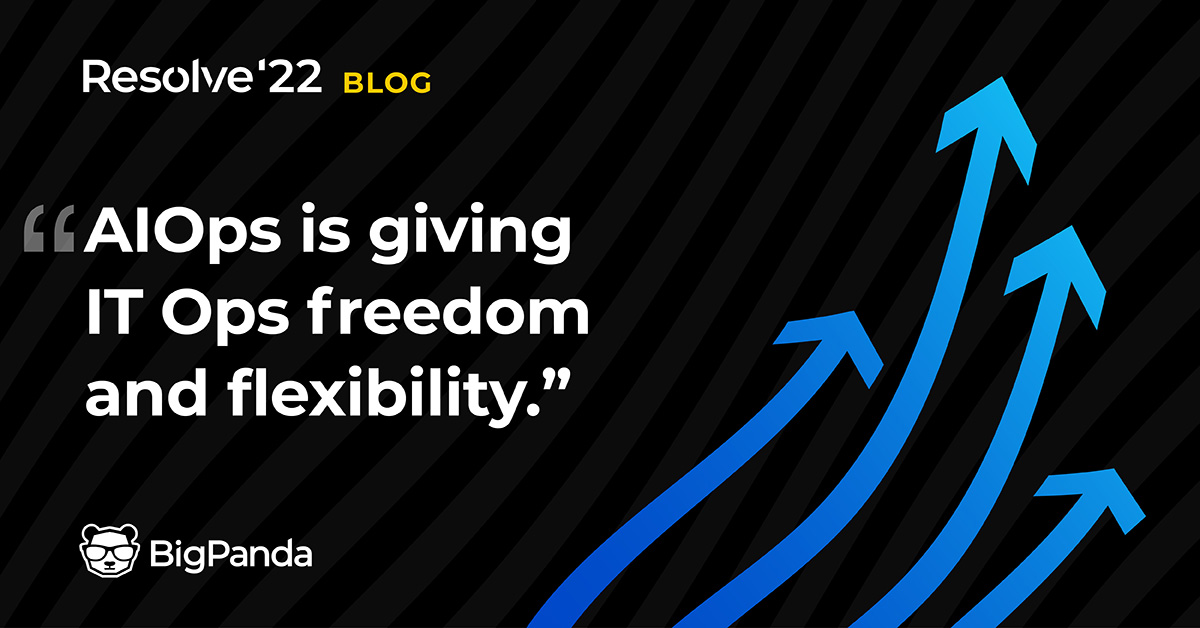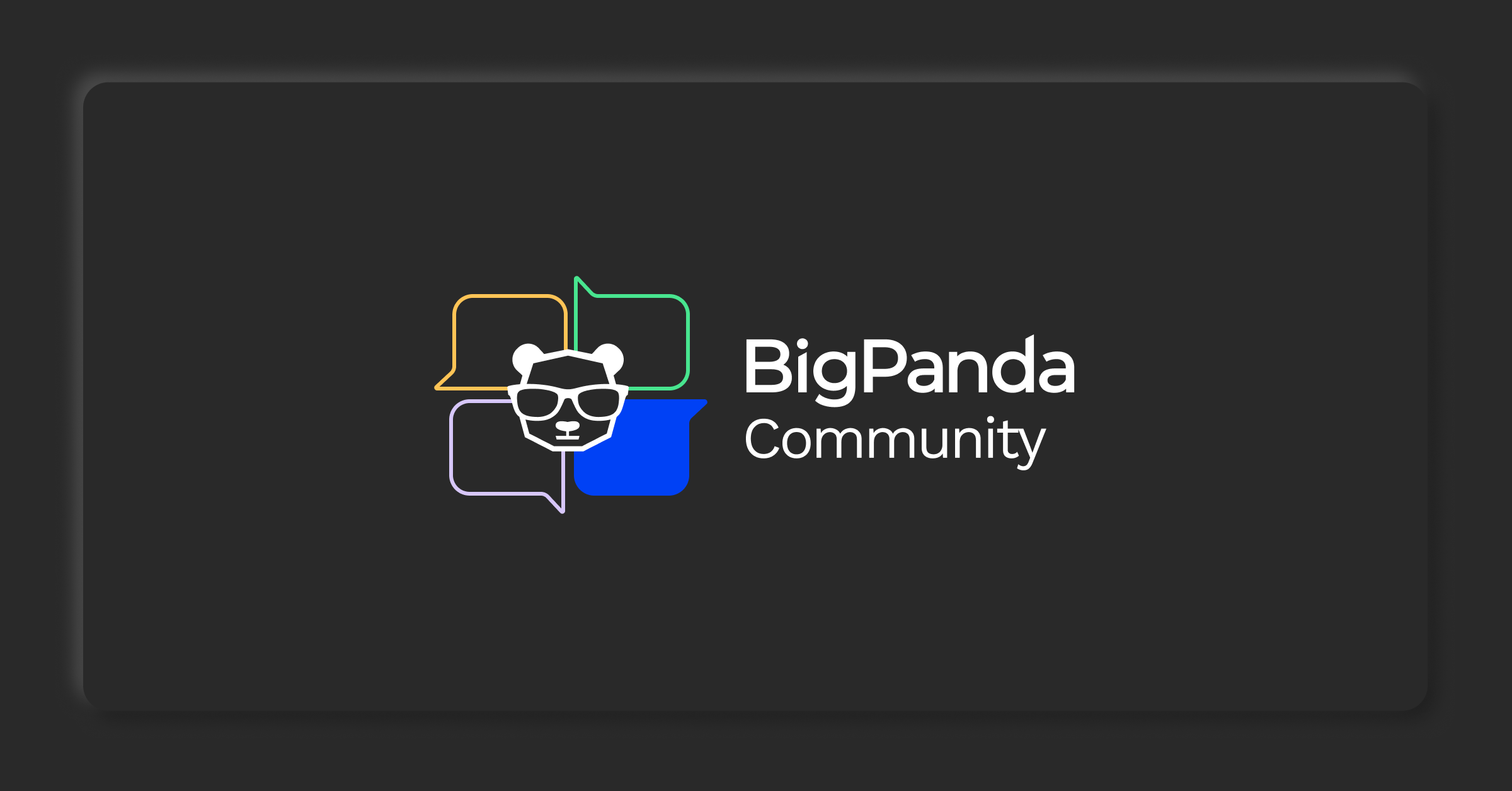RESOLVE ‘22: 10 takeaways from the only IT Ops-focused event

If there is one thing the last three years has revealed, it’s that IT Operations people are essential workers. They keep the businesses of the world running—and they do it often with little appreciation for their crucial work. They also face massive challenges as the operations they oversee get more complicated with digital services piling on and organizations mounting pressure to move more to the cloud.
This is why we host RESOLVE—the industry’s only event focused solely on uplifting IT Ops. As our annual community event for IT Ops professionals, we offer RESOLVE to simply provide helpful thought leadership, actionable advice and insight for IT Ops. RESOLVE ‘22 was no exception.
We were lucky enough to collect and curate some great information from trailblazers in the growing world of AIOps: organizations that have used automated solutions to combat unique problems, counter growing pain and give their IT Ops teams the freedom and flexibility to approach incident management from a proactive mindset.
It’s the only event of its kind, and every talk and panel had something new to offer onlookers from the IT Ops community. Read on for 10 takeaways drilled down from the collection of talks, plus full links to the videos and associated blog posts.
Takeaway 1: proactivity trumps reactivity, every single time
“With the right outlook in place, we can understand that the ship might not be sinking, but it does have a hole.” This quote from BigPanda Regional VP of Professional Services Jordan Gamble—offered at our RESOLVE ’22 event Behind the scenes—says a lot about burdened IT Ops teams. When they have the tools to recognize problems in advance, they can stop them in advance.
Presenters at Measuring what matters mirrored this sentiment. Matt Maxie of Lumen Technologies, for instance, claimed that “aiming to prevent preventable incidents” was a viable outlook, provided “the data we collect during an incident and provide our teams” has the depth—and correlability—needed to make the right conclusions.
The point: stopping a problem in advance will always be better than waiting for it to occur. That’s true whether the organization is exploring ways to cease customer-facing incidents or internal-only problems, and the value of the statement only grows as their technical complexity scales.
Takeaway 2: you can often directly attribute low IT Ops morale to wasted time in bridge calls and meetings
Most people understand the frustration and boredom that come with being roped into a meeting or call. As presenters at the event noted, the problem compounds greatly in the IT Ops workspace where limited understanding of issues and their timing can require teams—including those on call—to show up to rundowns where they can’t have an impact.
Removing the combination of urgent and unnecessary from the average resolution call helps IT Ops personnel isolate problems and spend more time doing things that matter. And as Measuring what matters presenters Ben Narramore of PlayStation and Maxie noted, that can have a significant impact on job satisfaction.
Takeaway 3: a command center is increasingly necessary
In the event Best in class, Honeywell’s Dr. Rachel Bailing said that her organization, a major enterprise with specific needs for its many manufacturing sites, found itself responding much more quickly and competently to errors once the company switched to a service-owner mentality. This mindset requires the business to quickly pivot and decide on information it receives in crunch situations.
Presenter Ronnell Vergara of Insurity laid out a similar claim in the event Bit by bit. He called network operations centers (NOCs) an “early indicator of maturity” for businesses trying to simultaneously increase uptime and IT Ops effectiveness. Speakers at both events praised the NOC’s ability to distribute workloads more accurately among L1s and above.
The connection here is simple. AIOps enables businesses to take a holistic approach to the problems they face, no matter how distributed or fragmented the systems running the show may be. It’s also indicative of a proactive technology model, and it keeps IT Ops workers engaged with their jobs.
Takeaway 4: AI makes massive troves of data manageable
Vergara also said in Bit by bit that configuration management databases—or CMBDs, which have come back into popularity alongside the growth of AIOps—reflect just what a company with large amounts of data can do, provided they have automated tools to shape the landscape. Because CMDBs “go out of date really quickly,” he said, a process that keeps them up to date on a daily basis lets companies “build a picture, a topology, and go towards that maturity we all strive for.”
But CMDBs ultimately reflect just one small part of AIOps’s utility for IT Ops teams. In How to get multi-cloud done right, speakers Chris Archer of Cardinal Health and Anthony Evans of Stackstate—along with moderator George Knoll of AWS—laid out a similar argument regarding whole-company observability. They said lifting key functions to the cloud becomes easier with full observability into a fragmented tech stack. Additionally, so does coaxing vendors to provide fuller multi-cloud support, since a company can use the data they gather to make key points and demands.
Takeaway 5: facts are always welcome when managing vendors and technology options
The speakers at How to get multi-cloud done right had quite a bit to say on the topic of vendor accountability. From problem resolution to getting sidelong competitors to act on the same page, broad data backed by AI insights make it easier to achieve outcomes organizations need to stay reactive.
For Darren Boyd and Satbir Sran of the Incubator Podcast—and presenters at our Observability and AIOps sitting in a tree—that means being able to take a vendor-agnostic approach to evolution. As they noted at their talk, AIOps tools allow broad data collection techniques that “transform the observability pipeline” across diverse data landscapes—giving greater freedom to choose between vendors.
As Sanjay Poonen, speaker at the event A CIO’s dilemma noted, that flexibility can also be a huge boon when “building timeless applications and architecture.” Note here that this is different from future-proofing, a term that rightfully makes IT Ops personnel wince. Using AIOps to reduce dependence on single-cloud platforms would be an element of the timelessness Poonen describes, for instance.
Takeaway 6: AI compresses overwhelming alerts into actionable intel
Now let’s turn to the talk Putting artificial intelligence and machine learning to work. In this insightful session, “ethical hacker and professional IT leader” Rob Shimonski noted that “being your own AIOps engine” in an era of cascading tickets and alerts just isn’t smart business.
Udo Strick of Waste Management expressed that notion in action: his company uses AIOps to whittle 300,000+ alerts a month into singular bits of signal he and his team can track, identify and eliminate.
Repeated improvements at this scale simply aren’t possible without the presence of AI tools, which can parse through the massive troves of data organizations generate. That makes AIOps an attractive target for any business looking to make more functional use of the information they generate—however much noise comes along with it.
Takeaway 7: AIOps isn’t just an opportunity for the business
In the first couple takeaways, we noted a few “at-work” ways AIOps can improve professional life for IT Ops personnel. Looking beyond bridge calls and meetings, there’s the idea of basic job function to consider. Carlos Casanova of Forrester noted this at our RESOLVE ’22 keynote, adding that troves of alerts that “overwhelm” L1s inevitably spill up to L2s and even L3 personnel, creating logjams that become an accepted means of handling issues over time.
A properly configured AIOps solution can help workloads flow naturally to the desks they’re supposed to land on—and stop there. That freedom can create outcomes that benefit both the business and the people managing its technology.
Ryan Taylor of Transposit expressed this idea in his talk, Incident management automation. At Transposit, AI’s ability to ease workloads had the side benefit of helping people reskill and upskill to roles more suited to the company’s automation goals. Because of this, he said: “I don’t know that AIOps is necessarily going to cause a great downsizing in IT Ops; I do certainly think it’s going to be a reskilling or learning opportunity for a lot of people.”
Takeaway 8: microservices will continue to necessitate the presence of AIOps
Looking again to Ryan’s talk at Incident management automation, a funny anecdote was shared about the microservices businesses rely on. At his company, he made it a point to hire a group of employees who “had a passion for making their own lives easier” and carried a real dislike for inefficient processes, repetitive workloads, unnecessary meetings and bridge calls.
In turn, he said, this allowed his company to build a true automation-first mindset into the tech stack without “solving world hunger.” They automated on their own terms before upper management (with their relative lack of technology understanding) could mandate it.
It’s a smart approach in this era of microservices, and the outlook will only become more necessary as businesses at all levels look for ways to move key aspects of legacy tools to a more cloud-friendly format.
Takeaway 9: AIOps is an essential customer service tool in the right hands
RESOLVE ’22 was all about creating happier, better equipped IT Ops teams—and in customer-facing tech stacks, nothing makes IT Ops professionals happier than a lack of upset clients. In Customer experience in action, Sridevi Matukumalli of Translation.com spelled this notion out in terms of uptime.
“Companies have got all these blocks stacking up” when they provide a high-uptime service to customers, she said. Instead of treating each one as an individual key performance indicator (KPI) regardless of its overall impact on that service, AIOps allows her company to treat overall quality as the threshold.
In other instances, AIOps allows companies to offer customers a better self-service experience. That was the case for Kavitha Mani of Dell Digital, who used BigPanda’s solution to trigger a foundational change in the way her company handled matters like self-service server provisioning, per what she shared at the session Warp speed to digital innovation.
In all these cases, the idea’s the same: whether customers expect a high degree of uptime, increasing levels of self-service capability or other digital-delivered promises, AIOps is a good friend to have in their corner.
Takeaway 10: flexibility is key, and AIOps helps foster it
For Shawnna DelHierro of Visionworks, AIOps’s utility became clear when the pandemic forced unprecedented numbers of customers to the phone lines. As she noted in Warp speed to digital innovation, a variance of up to 100,000 calls per week forced her company to think fast and accommodate many more callers with a broader array of questions than the company was used to. AIOps was the key in a chain of decisions that kept the company flexible enough to adapt on the go.
We also drew insight from Roger Barranco of Akamai and Craig Bowman of VMWare in The SOC and the NOC. As they said, businesses can only achieve a high level of flexibility with a tool that keeps them informed regardless of the number of systems and environments their operations touch. With tools that allow companies to “virtualize entire data centers” and “breach all kinds of different environments to manage very complex environments,” it’s increasingly important for companies to use tools that bridge info sources and provide cohesive results.
Closeout: see the full RESOLVE ’22 lineup for more best practices
We hope every attendee at RESOLVE ‘22 walked away with valuable advice, some best practices to try and interesting food for thought. Check out the links in the recaps above to view the full sessions that offered insight for each audience. We hope you find them helpful, and we’re here to answer any questions.



